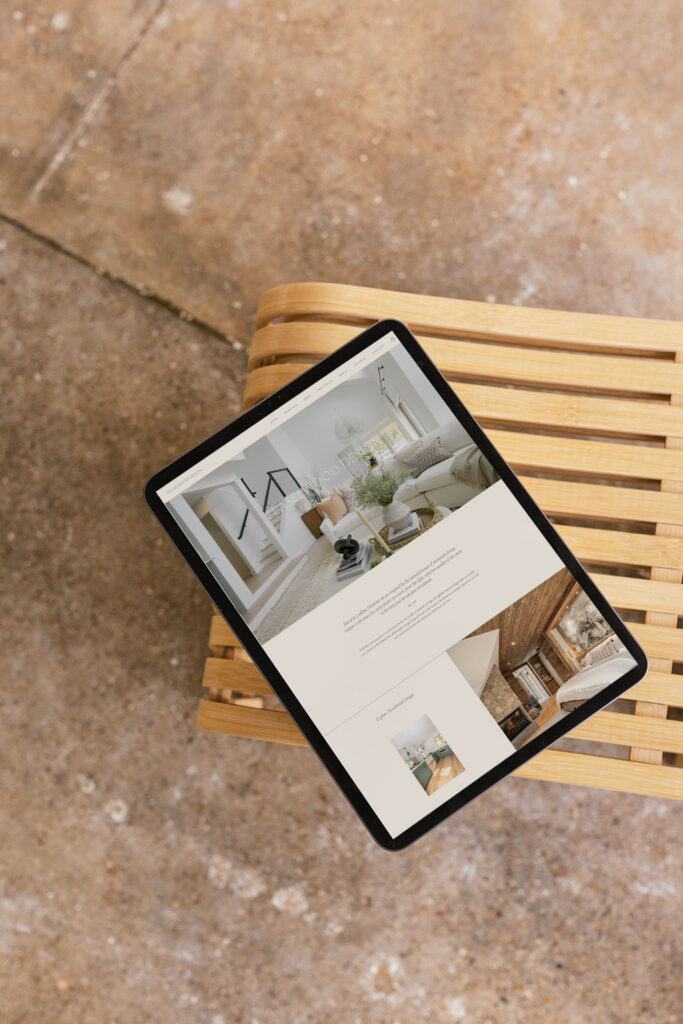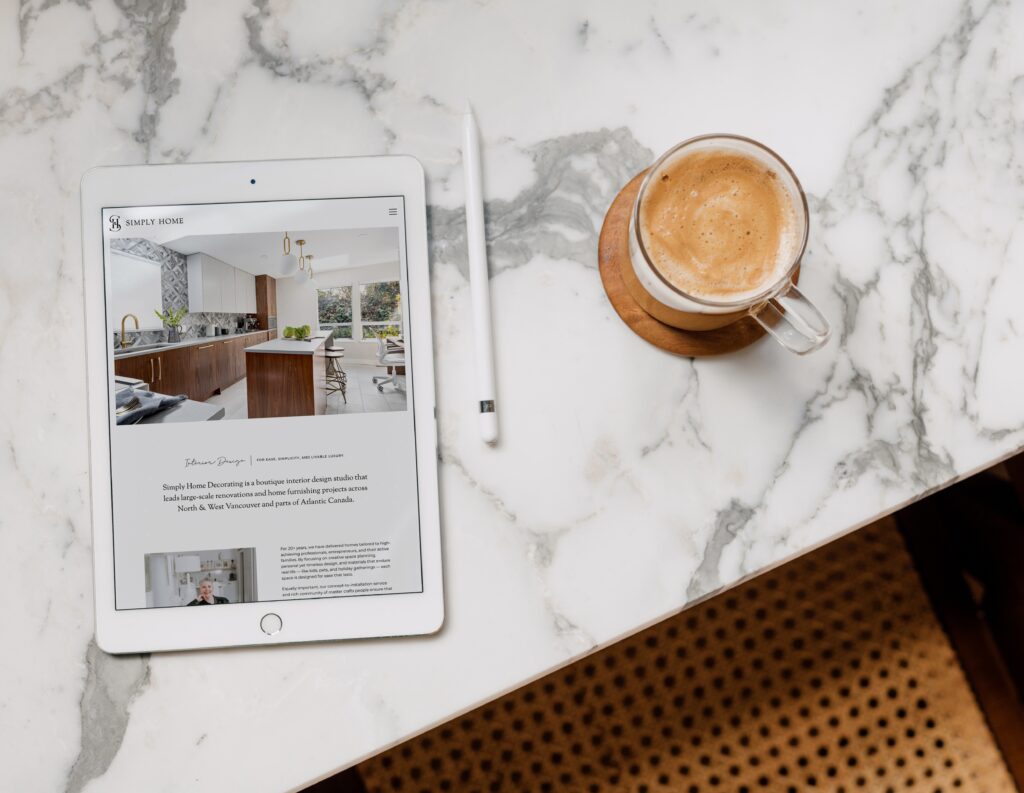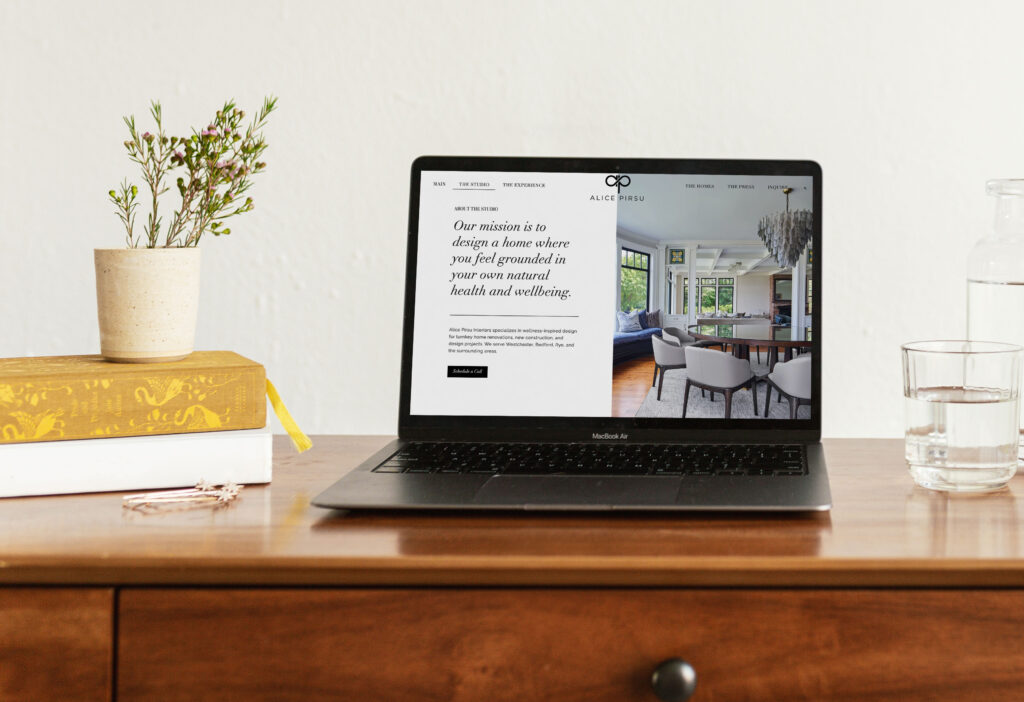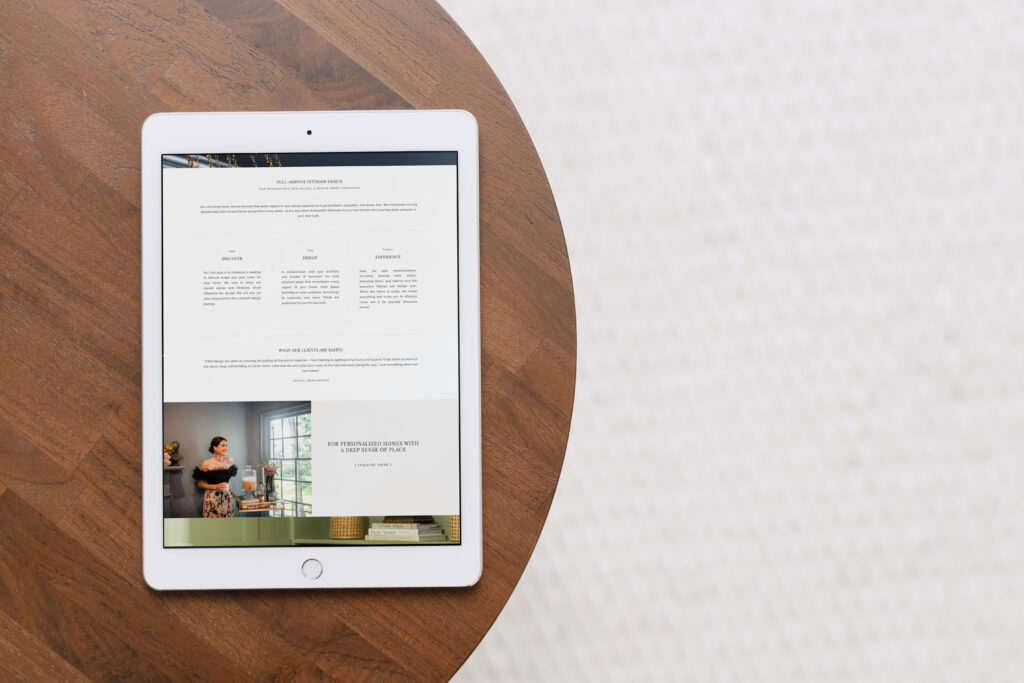Website Copy Series: Elements of a Strategic Homepage

We’ve been working on website copy for 3 interior designers over the last several weeks, and one thing is abundantly clear to all of us: great website copy is infinitely more than the words you see on the page.
Website copywriting is an artful balance between compelling, relatable language, business strategy, and psychology.
In fact, it’s not all that different from interior design. When you design, you create more than a beautiful space:
- All the elements need to talk to each other and get along.
- The space needs to be functional for your client’s lifestyle.
- It needs to speak to them on a physical and emotional level.
- And you’re factoring in the past (your clients’ unique story and tastes) and the future (how they really want to live in their home).
Creating beauty? Function? Strategy? Experience? THAT’s what your website copy has to do, too.
Over the next few months, we’ll be sharing our Copywriting Series, giving you some insight and strategies for each of the pages on your website. And it all starts with… your Home Page. Here’s what every designer’s Home Page needs to succeed.
More from this series: About pages and Portfolio Descriptions
1. Your dream clients should be able to immediately identify themselves on your Home Page.
Your ideal client is the WHO of your website copy, and this person should be able to instantly recognize themselves in your Home Page copy. For example, let’s say you specialize in design that makes your clients feel like they’re on vacation all year long. That’s fantastic, but WHO are those interiors for?
Busy families with young kids? Working couples with kids out of the nest? Bachelors? Retirees eager to downsize and live the good life?
It’s tempting to avoid niching down—and you don’t have to get too exclusive—but speaking directly to the clients you love working with will attract more of them than trying to cast a wide net. Far more. (This is why our copywriting services always start with Brand Messaging.)
How to do it:
You could directly state who you serve, or
Imply it indirectly by speaking to details around their lifestyle, tastes, or goals
2. Great website copy makes your client the main character of the story.

Your ideal clients want, need, and will enjoy your help with – or total takeover of — their design project, BUT they don’t want it to be all about you. They still want it to be about them.
Your website copy needs to strike a perfect balance between making them feel like the hero of the story while positioning you as the expert guide who will help them reach their glorious destination.
How to do it:
Address your client in website copy as “you,” not “our clients”
Instead of saying, “WE do THIS for you“… try, “YOU get THIS with our help.”
Briefly mention your process or services, so they can see the journey they will be taking. (Great for a Services section on the homepage.)
3. Potential clients should quickly understand what you’re really offering. (Hint: It’s not design.)
This is the WHAT of your Home Page copy. Gone are the days when you could get away with saying “we design beautiful spaces.” It’s not very original, and it’s missing an emotional connection that will help potential clients see that you understand them. So… what are you really doing for your clients?
Do you bring them a calm and soothing escape from the busy world? A place to connect better with their children and spouse? A haven where their creative genius feels inspired?
If you understand what your client really wants their home to help them do in their lives, you can speak to that final result. Then, your services become so much more compelling — it fulfills your clients on a physical and emotional level.
That’s what will motivate them to book with you. Again, this is all part of our Brand Messaging process. We have to set the foundation.
How to do it:
Read this post on understanding your clients’ 3 levels of need. These are your clients’ pain points, which you can help them solve.
Address these pain points directly in your website copy.
Paint a picture of the solutions they can achieve with your help.
4. Your Home Page copy should establish a connection between you and your dream clients.

They are two layers to creating a connection with your potential clients. First, when they are reading (or skimming) your website copy, they should be thinking, “Wow, she really gets me.”
Second, they should also feel that they can relate to you. No, that doesn’t mean your dream client has to be your personality twin, but if you can show empathy and relate to their struggles, goals, or dreams — you are establishing a deeper emotional connection, not just a surface one.
This is the WHY of your Home Page copy — your mission, very quick background (can be longer on the About page), and why you do what you do. Again, just make sure to frame everything through the lens of your clients being the hero.
How to do it:
Be visible and introduce yourself. We always like to an include an About section on the Home Page which includes WHY you do what you do.
Be personable yet professional
5. Your Home Page copy should lead potential clients down a defined path.
We bet you don’t include fifty sectional options when you present your design concept, right? The same is true of your Home Page’s Calls to Action — if done intentionally and strategically, less is more. Too often, we see scattered experiences that give the website visitor too much information or too many buttons to click.
Your website copy needs to create a user experience — a defined path that you want a potential client to take, from landing on your Home Page to booking a call with you. The more selective options you can give people, the better off you will be.
This is also the HOW of your Home Page copy — they meet you on the Home Page, and by taking them to the next step (learning about you and your services), you show them the process & how they can achieve their goals with you.
How to do it:
For the most part, your Home Page’s Calls to Action (usually buttons, sometimes links) should take potential clients to your Services page or your Contact page. They will have these options and others in the menu (About, Portfolio, etc.), so don’t throw everything at them. Only provide buttons to what you really want them to do: learn more about your offerings or book with you.
Make sure your Calls to Action are very, very direct. Buttons like Book a Call, Work With Us, Explore Services, Inquire, or Learn More are perfectly short and to the point.
6. Might go without saying but your Home Page should have text.

The flipside of information overload is too little information. We have all seen the minimalist style websites that have a single, impressive interior (with a view) as the “Home Page” and very little copy anywhere else on the site. We understand the angle here, we really do. These sites are intended to make you look high-end and let your work speak for itself.
However, there are a few reasons we don’t suggest this approach.
First, from an SEO perspective, it is a huge missed opportunity. If there is very little copy on your website, Google won’t have much content of yours to surface in search results.
Second, by not speaking directly to your ideal client, you miss the opportunity to attract that person. Even if your website succeeds in getting potential clients to reach out, it will be a range of people you may or may not want to work with.
Note: This strategy ONLY works if you are getting projects by referral and have no intention of building a digital presence. If that’s the case, have at it.
How to do it:
Have more than a few lines of text on your Home Page. We suggest at least 3 sections — an introductory section, a section that shows a quick overview of your services, and an about section. You could also have a process section and/or a section for your lead magnet, which is great.
7. Your Home Page should be SEO-friendly.
Last but not least, SEO. It’s important that your Home Page takes SEO into account without becoming robotic or overthinking it. Search engines are looking for specific features (like headings or keywords) when cataloguing your site as a potential source of information for search queries.
If we want your website to pop up in search results, we have to pay attention to these things:
Make sure you are using headers for the most important ideas — this is good for SEO and makes it easier for people to skim your website and still get the important points quickly. (Your website designer will know how to integrate this.)
Weave your SEO keywords throughout. These words should be related to your industry, your service, your region, and your ideal clients. These will come naturally if you (or we) have done our homework in defining your ideal clients and projects.
Add a meta description to every page. It should use your keywords and very directly state what you do, who you do it for, and where you do it. This is something your website designer can do, or you can ask us to include it as part of our website copywriting service.
Looking for examples?
Take a browse through our Portfolio to see a variety of home pages that hit the mark.
Cheers to a website that works FOR you!
Jaquilyn
WORKBOOKS & DOWNLOADS
A-to-Z LIST OF LUXURY WORDS
GUIDE TO BRAND MESSAGING
START BLOGGING FOR SEO
Printable Workbook
Our Go-To Lexicon!
Guide + Checklist